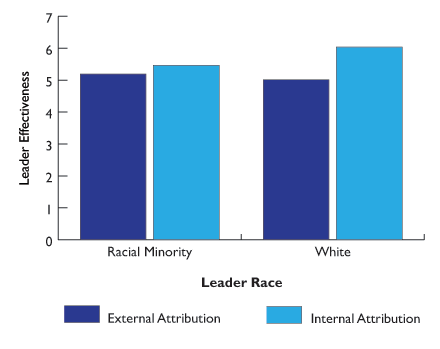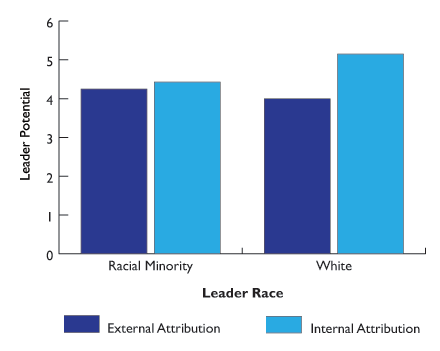Careers Leadership Policy Nov 1, 2008
Transparent Barriers
What is preventing racial minorities from attaining leadership positions in the corporate world?
In the last days of 2001 a Midwestern university hired an African American coach for its college football team. He was the first African American coach hired for any sport in the university. This decision led to numerous talks and rumors on campus and in the press about the race of the coach and how it may affect the team’s reputation. After only three seasons of a six season deal and a 21-15 record, the coach was fired, becoming the first coach in the university’s history to have his contract terminated in the middle of his tenure.1 The reason given by the university was bad performance. Yet, previous coaches with worse performances were given more time. Did race have an effect on the way the coach was evaluated?
Katherine Phillips from the Kellogg School’s Management and Organizations department drew her inspiration from events like this when she and her colleagues began to investigate the impact of race on leadership evaluation and career advancement opportunities. “We had a few ideas before the project, but the project started shaping itself,” Phillips said. “We started thinking that African Americans are not getting the credit they deserve; they do not always have the doors opened; and when they get there they are evaluated differently. We saw this happening with football coaches, but does it happen in business? Can we show that these differences exist and have an impact on people’s ability to ascend to leadership positions and stay there?”
White business leaders are evaluated as more likely to succeed and as more effective than racial minority leaders, suggesting that there might be a White standard to which minorities are compared.Since the civil rights movement, great strides have been made regarding the representation of racial minorities in different sectors in our society—from college football coaching staffs to corporate environments. Yet research has shown that even though explicit barriers have disappeared, well-trained racial minorities do not advance to leadership positions at the same rate as Whites. The prevailing question is why? New research from Phillips and her colleagues, former Kellogg graduate student Ashleigh Shelby Rosette (Duke University) and postdoctoral researcher Geoffrey Leonardelli (University of Toronto), suggests that the answer may lie in leadership prototypes and leadership categorization theory. The researchers found that the performance of racial minority leaders is evaluated with a certain leadership prototype in mind, which they called “the White standard.” According to this, evaluators perceive successful leaders as White regardless of their own race; consequently, White leaders are considered more effective and typically experience better career advancement opportunities than racial minority leaders.
Leadership Categorization and the White Standard
In order to organize and make sense of the world, people develop cognitive categories. From these categories, prototypes emerge as typical examples or standards. For instance, an animal with wings that can fly may be called a bird. However, by nature, these prototypes are schematics that cannot account for all variations within a category. Atypically, ostriches and penguins are birds even though they cannot fly, just as bats are not birds even though they appear at first glance to fit the criteria. Leadership categorization theory extends these principles and shortcomings to the leadership realm and contends that leaders are evaluated according to pre-existing leadership prototypes in a process that evaluators themselves may not fully comprehend. These leadership prototypes influence the way leaders are evaluated, and they can be highly detrimental in atypical cases where mismatches occur between prototypes and reality.
Has a White standard entrenched itself in a deep, invisible space beyond the reach of the core American values of equality and opportunity for all that the nation professes so tirelessly? Every day Americans are exposed to White individuals holding prominent leadership positions not only in business but also in politics. Until now, a major political party has never nominated a presidential candidate from a racial minority. In addition, current statistics show that 87 percent of chief executive positions are held by Whites in the United States.2 Therefore, those who evaluate leaders may perceive (either subconsciously or otherwise) that “being White” is a central characteristic of the business leader prototype. Phillips, Rosette, and Leonardelli sought to determine whether whiteness has become part of the business leader prototype in the United States, thereby placing racial minorities at a disadvantage in both leadership evaluations and subsequent career advancement.
Group Prototypes and Negative Stereotypes
The findings offer a more in-depth understanding of racial bias in leadership evaluations than traditional theories revolving around group prototypes and negative stereotypes. In previous literature, group prototype explanations have suggested that the more a leader represents the racial group to which the evaluator belongs, the more favorably the leader will be evaluated (e.g., Whites should evaluate Whites more favorably, and Hispanics should evaluate Hispanics more favorably). Theories involving negative racial stereotypes contend that not all minorities are viewed in the same light. Asian Americans, like Whites, are generally associated with positive traits such as intelligence, ambition, and industriousness, whereas Hispanics and African Americans are often associated with negative characteristics like ignorance, laziness, and incompetence. However, the results demonstrated by Phillips and her co-authors belied a more complex story than these other explanations.
“Based on the group prototype alone, people should evaluate leaders of their same race more favorably, but they do not,” Phillips said. “Moreover, if evaluations are based only on stereotypes, there is no reason to believe that people shouldn’t expect Asian Americans to be effective leaders as well. So there is more than a racial stereotype that particular people might hold against a particular group that drives what we call the ‘White prototype’.”
Contrary to group prototype theory, the researchers found that regardless of the evaluator’s race, being “White” was attributed to leaders more frequently than non-leaders. Moreover, in defiance of stereotypes, White leaders were not only evaluated more favorably than African Americans and Hispanics, but they were also evaluated more favorably than Asian Americans.
Measuring the White Standard
The first set of studies tested whether evaluators assumed that more leaders than non-leaders were White and revealed strong evidence linking &ldquoldquo;being White” with the business leader prototype. Independent of the organization’s racial composition, leaders more than non-leaders were assumed to be White. Furthermore, business leaders were perceived to be White more frequently than non-business leaders even when Asian Americans were represented in the organization. Leaders were perceived to be White not only in financial businesses where Whites are largely more visible, but also in the service and nonprofit sectors, where minorities tend to concentrate.
“That was a surprising finding,” Phillips said. “People use their heuristics to see leaders and think about them as Whites. It is not that people say: ‘Wait a minute, how many people here are Black? What is the likelihood that given the population of people in this organization that the leader will be White?’ People have strong initial judgments about these things, and they follow these judgments even when the type of industry has a larger representation of minorities.”
In the second set of studies, evaluators rated the leaders’ performance after the organization’s success and after the organization’s failure. This time, they were informed about the leader’s race, so they did not base their decisions solely on their judgments. Evaluators were also presented with information attributing the organization’s success or failure to either external factors in the marketplace or internal factors such as the leader’s performance and decision-making skills. The authors found evidence that regardless of the evaluator’s race, White leaders were evaluated more favorably than African American leaders when they were viewed as responsible for the organization’s success (Figure 1). Moreover, after being responsible for the organization’s success, White leaders could capitalize more on their accomplishments and earn better career opportunities than other minority leaders in the same circumstances (Figure 2).
Figure 1:
Mean ratings of leader effectiveness after organizational success. The racial minorities in this study were African Americans.

Figure 2:
Mean ratings of leader effectiveness after organizational success. The racial minorities in this study were Hispanic Americans and Asian Americans.

Consequences of the White Standard
As these studies show, racial bias in leadership evaluations is based not on stereotypes but on deep cognitive processes or leadership prototypes that determine how we think about our leaders. White business leaders are evaluated as more likely to succeed and as more effective than racial minority leaders, suggesting that there might be a White standard to which minorities are compared. Consequently, Whites may be promoted to leadership positions more frequently than minorities, leaving racial minorities continually disadvantaged and underrepresented in top leadership positions.
Although explicit racial barriers have been derided in today’s organizations, “transparent barriers” may still prevent racial minorities from rising to the most desirable positions in corporate environments. Is raising awareness enough? “No,” said Phillips, “but it is a first step. There is a need to show that racial bias continues to be a critical issue in today’s organizations, and it may be indeed preventing minorities from succeeding. We now have evidence for that. It is not just a perception. We have data to support that claim.”
Phillips also reported that the presentation of these results stirred some controversy. “Some people just do not believe it, or don’t want to believe it, even after seeing the results,” she said. “It is hard to accept that even among the most egalitarian people such as educated college students, this differential attribution still exists.”
During this presidential election year, Barack Obama’s nomination sparked much discussion of racial bias and differential evaluation of leaders. As the nation stands poised to swear in the first African American president, one cannot help wondering if his administration will be judged with a White standard in mind.
Notes:
1. USA Today, 11/30/2004.
2. U.S. Bureau of Labor Statistics, 2006.
Rosette, Ashleigh Shelby, Geoffrey J. Leonardelli, and Katherine W. Phillips (2008). “The White standard: Racial bias in leader categorization.” Journal of Applied Psychology, 93(4): 758-777.


